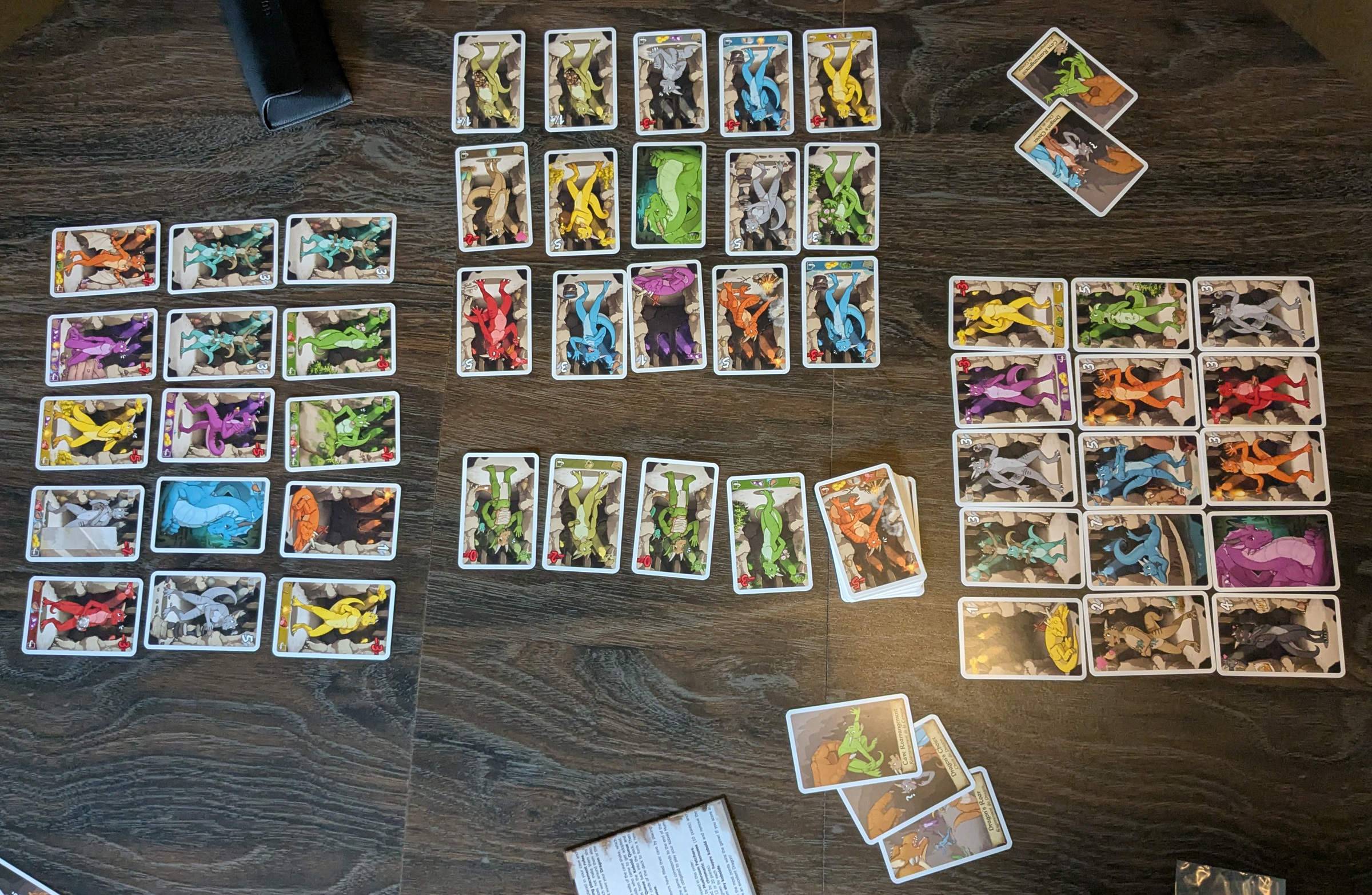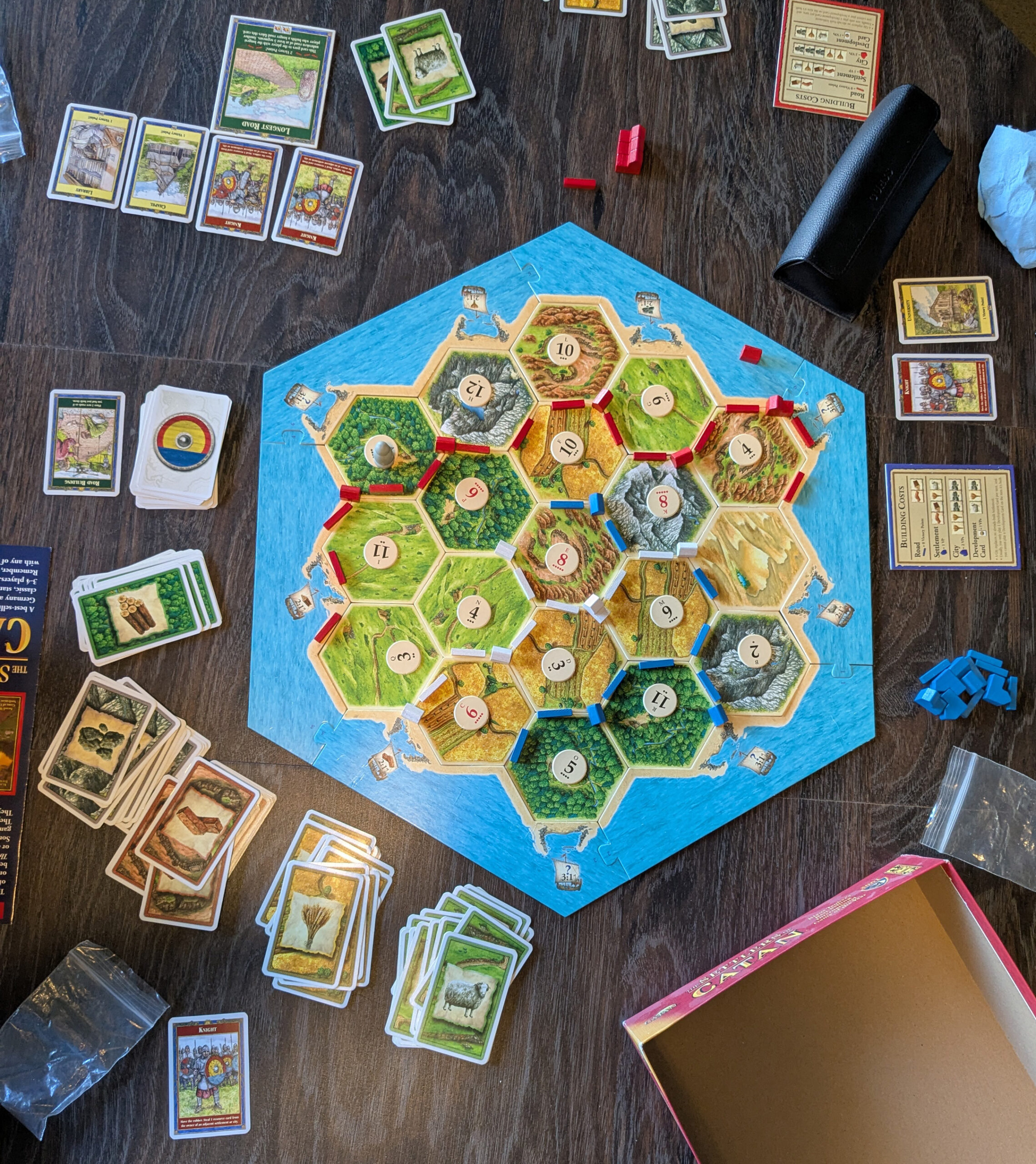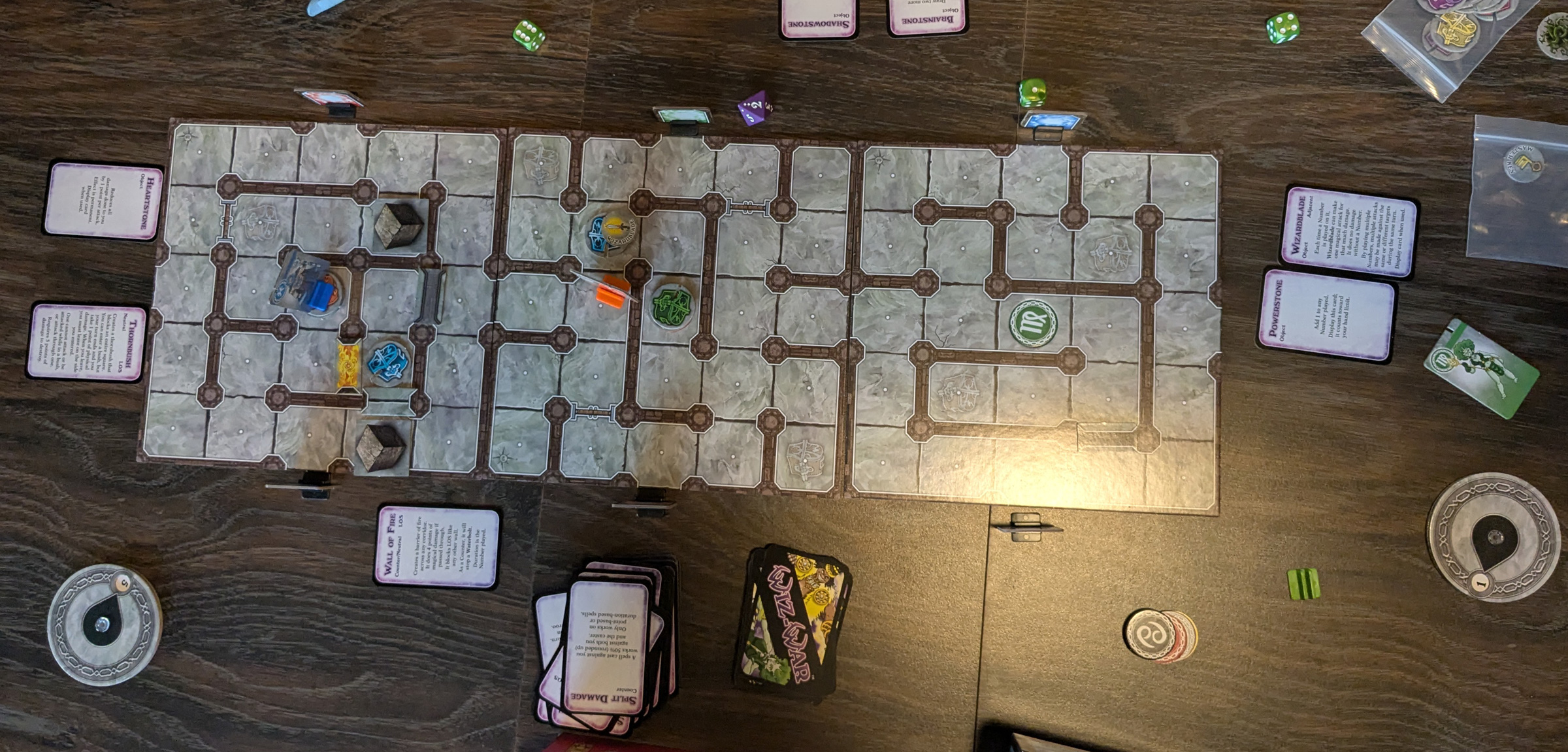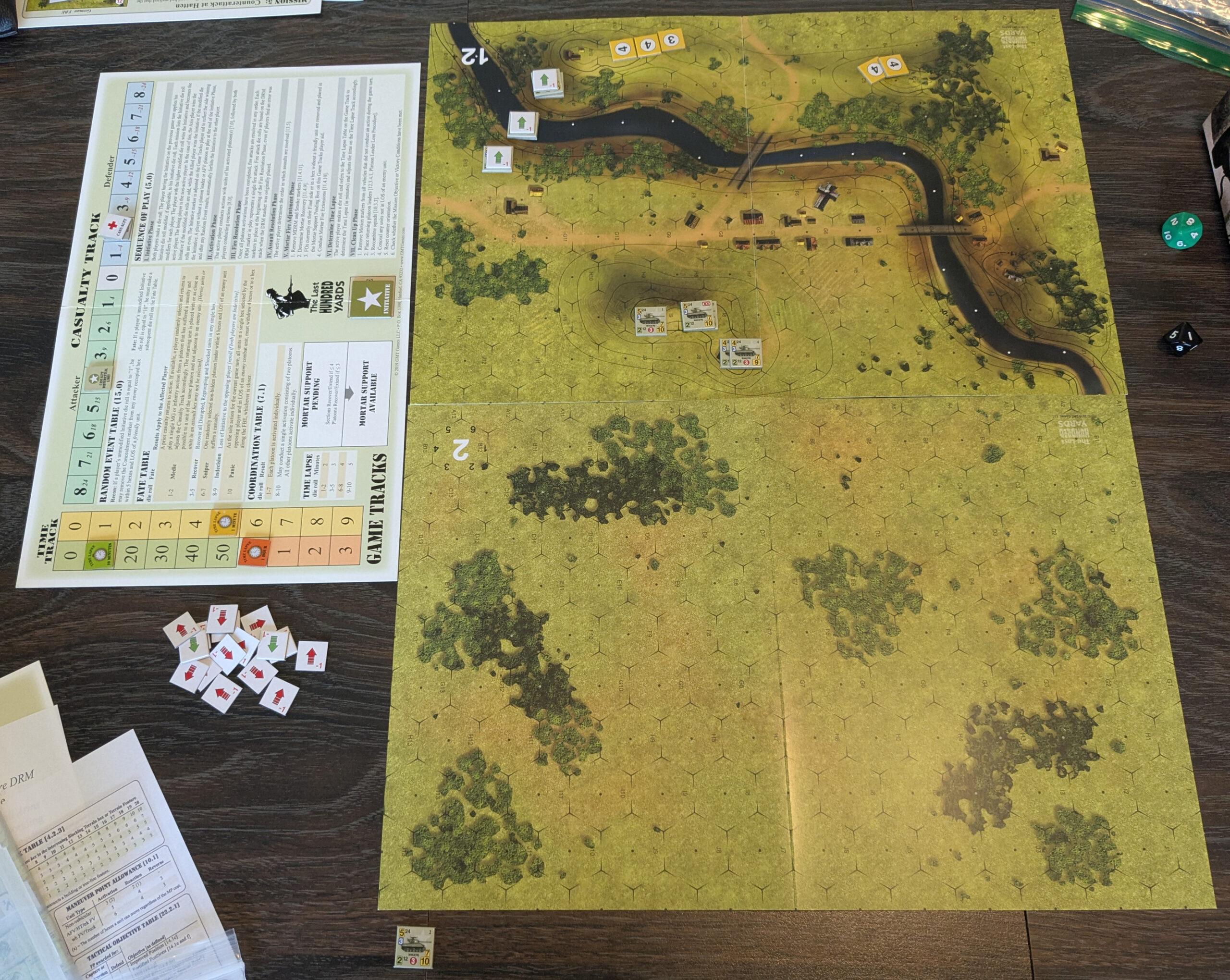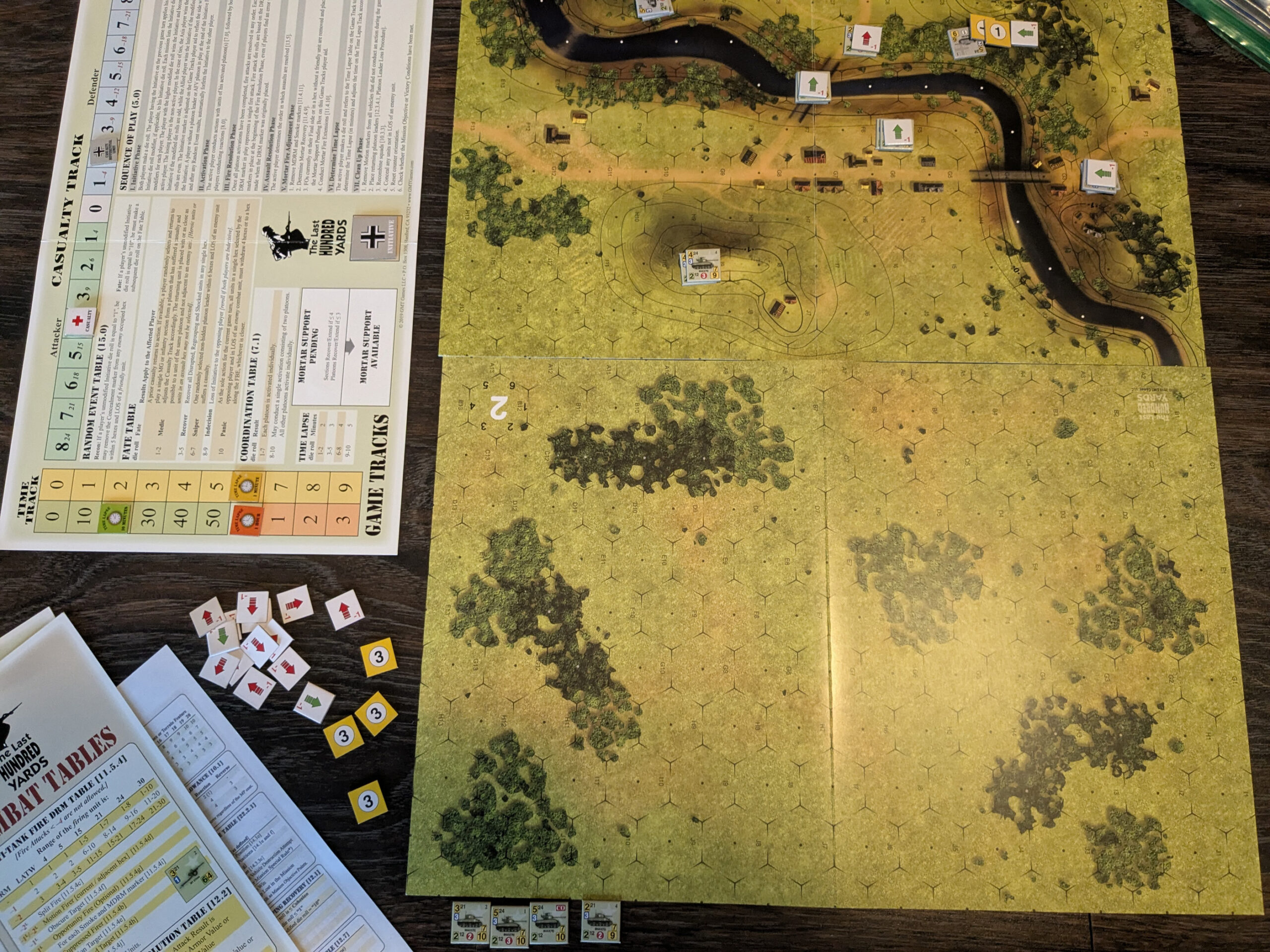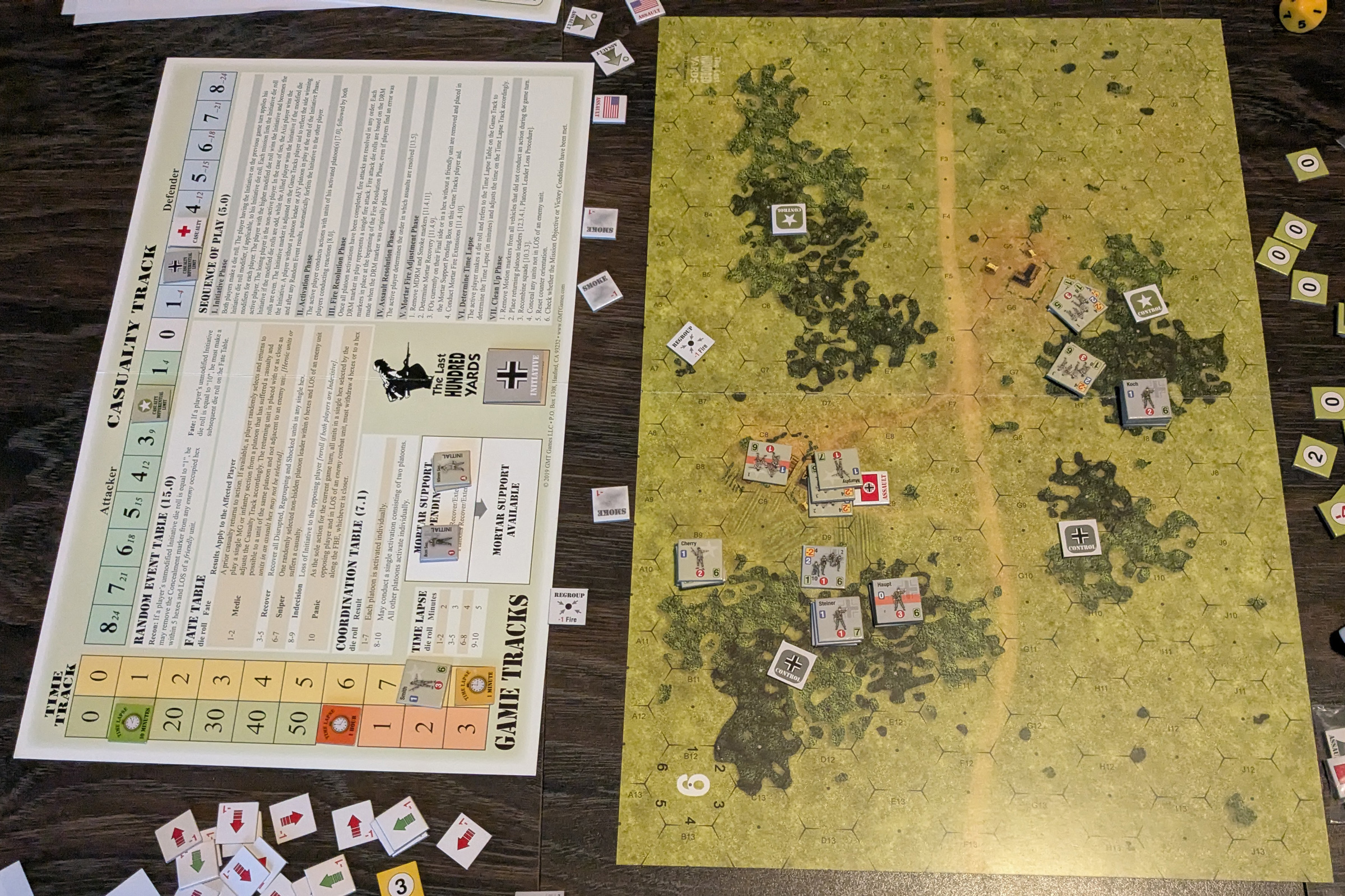After Demonlord, Mark and I made a long-overdue return to Flying Colors. We went to an early battle (Seven Years War) from the Deluxe set, which meant ginning up some new counters, as the Vassal module still hasn’t incorporated those. (Also, the British commanders you’ll see are wrong, but they have the right stats.)
The Battle of Lagos starts with a British line bearing down on the French fleet, and a second British force will arrive a few (variable) turns in. The French are already outnumbered, but have the only first-rate ship in the battle, everything else is third or fourth-rate. (I wish I had appreciated this much earlier.) The scenario notes that the French are outmatched, and offers a variant with five more French ships, but the second British force is guaranteed to come in on turn 2. Looks interesting, and I think it’s worth a try, but we stuck with the historical version. (I will note the French are already deep in a corner of the map, and the extra ships will probably give even more maneuvering headaches.)
I volunteered to take the French, and Mark got going since the British start with the initiative. We tried the optional defensive fire rule (i.e., firing at movement), and I opened up as HMS Culloden approached to do 2H, and she fired on Téméraire for 3HR. Then HMS America did 3H to Centaure.
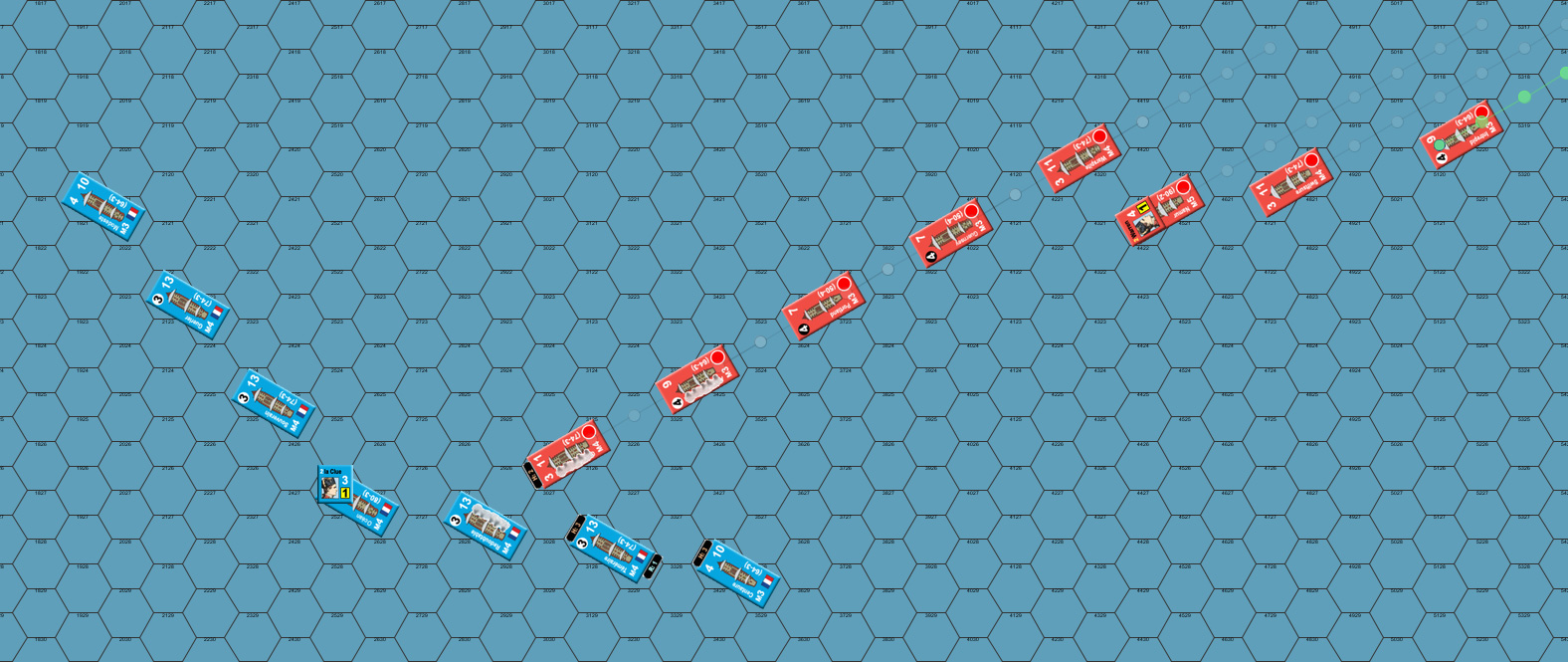
After British movement. Wind is from the top of the map.
The immediate French problem is that they are beating against the wind, and are practically immobile with 2 MPs. I wanted to run the French line up, and then turn to parallel the British line reaching with the wind, and so declared a ‘turn in succession’ order with the lead Modeste. (I might have been better served to just turn everyone for a running battle as is, and used sideslips to tighten up the windward side of the fleet.) Téméraire and Centaure returned fire during my activation, doing 4R to Culloden and 3R to America respectively.
Mark kept the initiative for turn 2, and Culloden and Téméraire fired on each other during a range 0 pass-through, doing three hits to each other (rigging to Culloden, and hull to Téméraire). Redoubtable fired the off-side at her, doing 5HR. America took 3R from Centaure, and did 2HR to her in return. Portland could only manage a partial broadside (the British line was backing up…) for 2HR on Centaure. Téméraire tried a rake during her activation, but rolled a 9, still doing 6H to Culloden, flipping her to damaged and setting her on fire. Centaure had nowhere to go (with 2 MP and America directly in front), so she tacked through the wind, getting off a fresh broadside for 2R on Portland, but breaking the turn in succession.
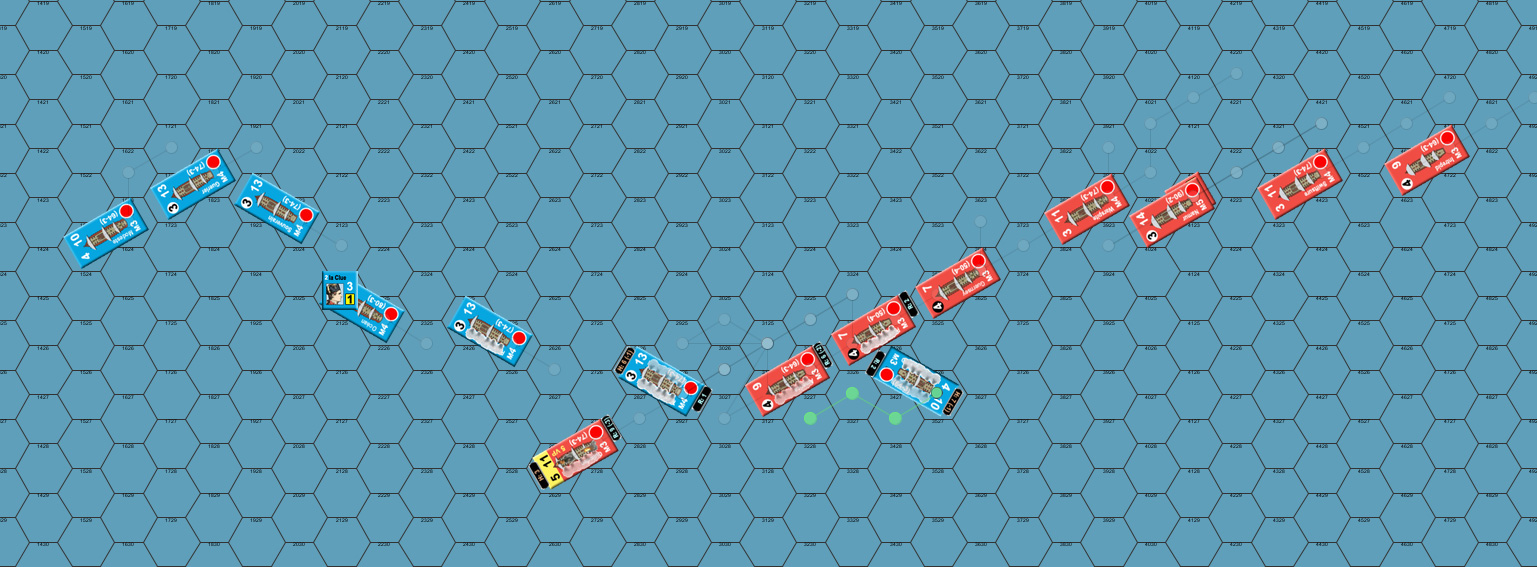
At the end of turn 2.
The British reinforcements showed up for turn 3, but there’s no great instructions for their arrival (just the east edge of the map), so Mark worked out a sailing order for them to start arriving in a compact line ahead under full sails. My lead two ships and Centaure were out of command for turn 3, while La Clue kept control of that part of the line that hadn’t turned yet. Mark retained initiative (on tied rolls), with Culloden firing on Redoubtable for H, and being reaction fired on by Téméraire for HR, and later movement reaction from Redoubtable for 2H. America raked Téméraire (our first successful rake attempt—mine had been hampered by being largely bow rakes) for 4H, while America raked Centaure for 4H (flipping to damaged) and fired on Téméraire for 2HR. Then Guernsey and Warspite fired on Centaure for 5HR, and 6H, sinking her (max hull damage, and sunk when we got to the end of turn check), while Guernsey also did 3H to Téméraire.
There was no more fire for the rest of the turn, but I turned my existing formation to get in line with the parts that turned early, and tried to get ready for a more formal pair of lines hitting each other. I caused myself trouble, but we didn’t realize it until a little later. I’m not sure just when we noticed, but there is a provision for masking a friendly ship, that keeps them from firing that broadside for the entire turn. This affected Océan, the first-rater, at a time when she was finally getting a chance to get into action (though still a bit far out, and I probably wouldn’t have fired that turn anyway). It also affected some of Mark’s ships, as his formation had gotten pretty muddled.
The British kept the initiative for turn 4. Redoubtable and Portland exchanged broadsides, taking 1H and 2R respectively. Guernsey raked Téméraire for 4HR, Namur did another 6H, and Swiftsure and Warspite both did R, leaving Téméraire four hull left.
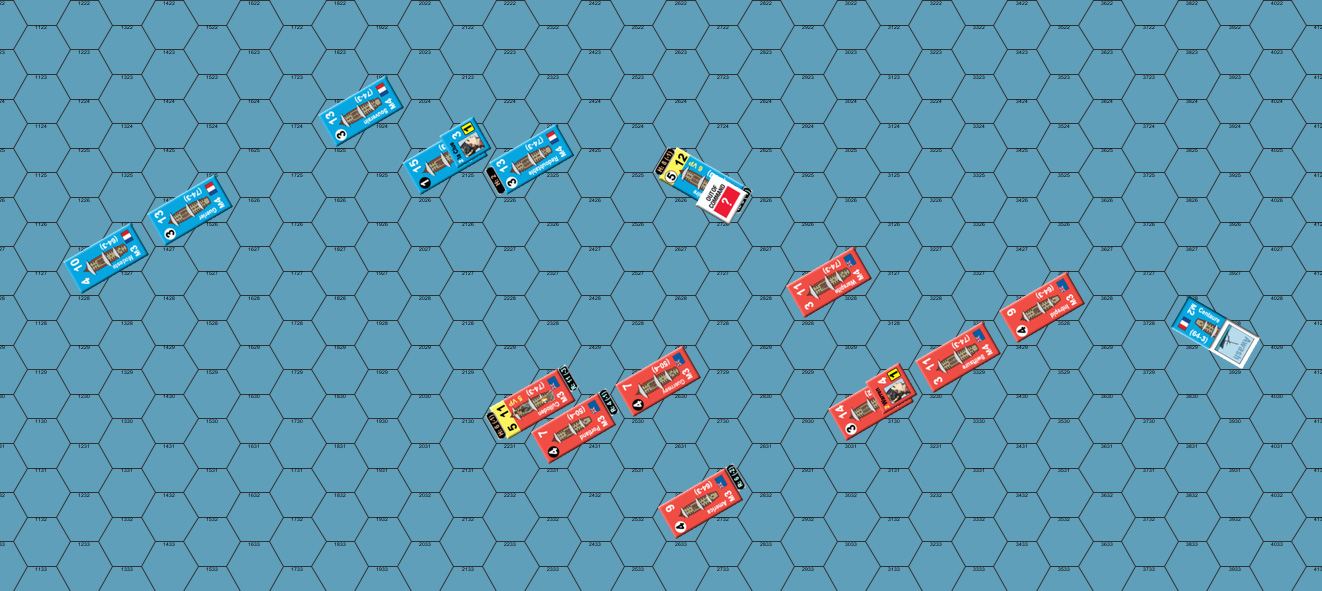
After British movement. Fired counters are to show masked broadsides; as showing it directly on counters would interfere with ‘first broadside’ tracking.
The French turned due south for my activation, hoping to cross the British “T”, though I did underestimate just how long it would take to accomplish. I was able to separate everyone out during the maneuver though.
The British still had initiative for 5, and they jockeyed for better positioning, with the only fire being Warspite into Téméraire for R and Culloden at Redoubtable for no effect. In my activation, Modeste did R, Guerier 2R, Souverain 2RH, and Ocean 3RH to Portland (leaving her at 12 rigging hits), while Redoubtable was unable to harm Culloden. Culloden finally extinguished her fire, just as the French fleet broke and ran.
With one ship sunk, and another damaged, the British had 7 VPs. Having only damaged one ship, the French had 2.5 (doubled for British Audacity, and halved again for breaking).
Afterword
The best thing about the game was the reminder that we need to play Flying Colors more often. The game is a lot of fun, and boils things down for fleet actions pretty nicely. The scenario’s lopsided, but this is mentioned in the description, and the real problem the French have is the lack of maneuvering that beating into the wind causes.
If things had gone another turn or two, Portland would have been in trouble, as a likely continued focus of French fire; at least until dismasted. After that would be Guernsey or America‘s turn, the latter having taken 6 rigging hits already. That said, Redoubtable would have taken a beating in turn, possibly along with Océan. It would certainly have been interesting to see a first-rate in the middle of all those third and fourth-raters. The second British fleet was still at least two turns away, and this is under full sail. Their real contribution was causing the ‘outnumbered by at least two to one’ modifier for the break check.
The turn in succession rules still need a lot of work. They assume everyone is in a very consistent straight line, and the French, as can be seen, aren’t set up like that here. The ships can’t get as close to the ‘turn’ counter as the rules stipulate. We worked with the idea that they would all turn as they hit the proper column, which seems to fit things fairly well here. The bigger problem is that the entire maneuver gets called null and void as soon as one ship fails it. When Centaure was forced to turn (one way or the other) because of imminent collision, all the ships ahead of her in line suddenly had no formation, which is just nonsense. Sure, if there had been ships after Centaure, they should be out of the command, but not all the ones still in an unbroken line to the turn in succession marker.
